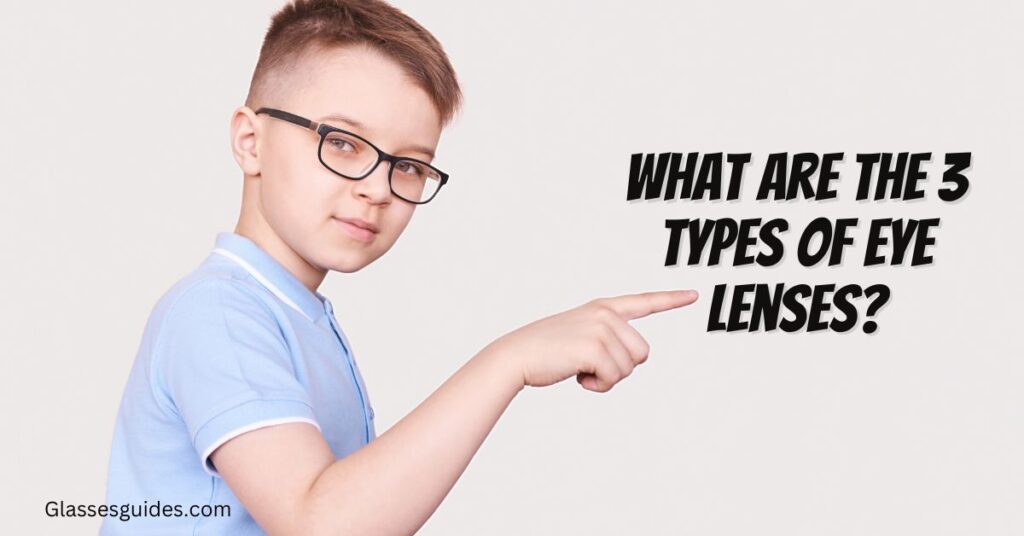These lenses, known as the 3 types of eye lenses, are responsible for bending and focusing light onto the retina, essentially acting as our biological camera lenses. Knowing these lenses clarifies the benefits of vision and highlights how important eye health is. See the world of these lenses with us as we learn how they work to provide us with clear vision at any distance.
Table of Contents
1. Concave Lenses
Among the trio of eye lenses, concave lenses stand out for their unique ability to diverge light rays. These lenses are thinnest at the center and gradually thicken towards the edges, causing incoming light to spread apart. This divergence of light is particularly useful in correcting nearsightedness, a condition where distant objects appear blurry.
Concave lenses aid in focal point adjustment by distributing light before it reaches the retina, sharpening the focus on far-off objects. By making this correction, those who are nearsighted can see faraway objects clearly, improving their total visual acuity and quality of life.
Concave lens wearers
Concave lenses are frequently used to correct the vision of those who suffer from nearsightedness, a condition in which distant things appear blurry. By distributing light before it reaches the retina, these lenses aid in improving visual acuity for those with this frequent refractive problem and let them focus on distant objects more clearly.
2. Convex Lenses
Convex lenses, in contrast to concave lenses, cause light rays to converge and focus because they are smaller at the borders and thicker in the middle. These lenses enlarge and clarify objects in a manner akin to that of a magnifying glass. To correct farsightedness, a condition that causes close things to look fuzzy, convex lenses are essential.
By bending incoming light rays to converge onto the retina, convex lenses adjust the focal point, allowing individuals with farsightedness to see nearby objects more distinctly. This corrective action enhances their ability to focus on close-up tasks and improves overall visual clarity.
Who wears convex lenses?
Individuals who experience farsightedness, where close objects appear blurry, often wear convex lenses to correct their vision. These lenses help to converge incoming light rays onto the retina, allowing for clearer focus on nearby objects and enhancing visual clarity for tasks such as reading or using electronic devices.
Further reading: Nearsightedness Vs Farsightedness: What’s the Difference?
3. Cylindrical Lenses
Cylindrical lenses differ from concave and convex lenses in that they curve more along one axis than the other. These specialized lenses are primarily used to correct astigmatism, a condition where the cornea or lens of the eye has an irregular shape, causing blurred or distorted vision.
Astigmatic people can see more sharply thanks to cylindrical lenses, which correctly concentrate light along both axes to assist in compensating for the irregularities in the curvature of the eye. To rectify this widespread refractive problem and enhance general visual acuity, these glasses are essential.
Who uses cylindrical lenses?
People with astigmatism, a disorder defined by anomalies in the curvature of the eye that causes blurry or distorted vision, frequently use cylindrical lenses to correct their vision. By correctly concentrating light along both axes, these lenses assist in compensating for the unique abnormalities in the shape of the eye, resulting in sharper and clearer vision.
Final thoughts
The human eye relies on 3 main types of lenses – concave, convex, and cylindrical – to facilitate clear vision at varying distances. Concave lenses are utilized by individuals with nearsightedness, convex lenses are employed by those with farsightedness, and cylindrical lenses are prescribed for individuals with astigmatism.
Different lens types are essential for directing light and assuring proper focus of images on the retina, which improves visual acuity and quality of life in general.
The workings of vision are clarified by an awareness of the roles played by these lenses, which also highlights the importance of corrective measures and routine eye care in preserving the best possible eye health.

FAQ
What is the difference between concave and convex lenses?
Concave lenses are thinner at the center and cause light rays to diverge, while convex lenses are thicker at the center and converge light rays.
How do I know if I need concave or convex lenses?
If you have nearsightedness, you may need concave lenses to see distant objects. Conversely, if you have farsightedness, convex lenses may be prescribed for clearer vision of close-up objects.
Are there any alternatives to wearing corrective lenses?
Depending on the severity of your vision problem, alternatives such as laser eye surgery or orthokeratology (corneal reshaping lenses) may be considered. However, it’s essential to consult with an eye care professional to determine the most suitable option for your needs.
How often should I get my eyes checked for new prescriptions?
It’s generally recommended to have an eye exam at least once a year, or as advised by your eye care provider, to ensure that your prescription is up-to-date and your eye health is monitored effectively.



